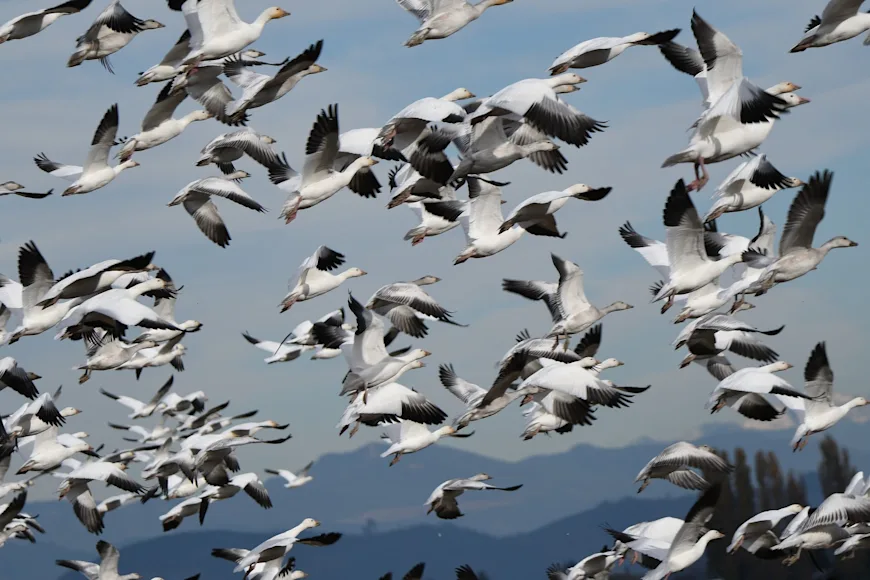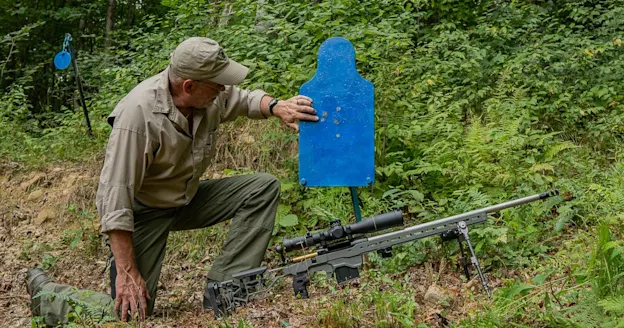_We may earn revenue from the products available on this page and participate in affiliate programs. Learn more ›
_
Standing on wingtips and flipping onto their backs to spill air, the flock of snow geese seemed to shatter, fall, and reform itself 30 yards lower as it bore down on the decoy spread. Surely this was the bunch that was going to commit and come all the way in. I should have known better.
Their pink feet turned cold when they hit the downwind edge of the decoys and the whole flock slid off to one side. We hurried to shoot while we could, and a few fell. Did I get one of them? It was hard to know. There were a lot of people shooting. What I do know is that I definitely didn’t shoot the single flying down the line of guns after the smoke cleared, because my gun was empty just like everyone else’s was.
Lesser snow geese weren’t born yesterday. In fact, a lot of them weren’t yet born 10 or even 15 years ago. Those old adult birds leading the flocks migrating north have seen it all several times over, making them among the wariest of all waterfowl to hunt. Give them the slightest reason, and snows slide off the end of a decoy spread, or hang high overhead at the edge of range, or just fly on by, oblivious as passing clouds. Yet if you go enough, you’ll hit one of those special days when geese pile into decoy spreads like commuters shoving their way onto subway cars—and the shooting is like nothing else in all of waterfowl hunting.
Snow goose hunting ranks as one of waterfowling’s toughest shooting challenges. Shots can be long, and you’re often shooting from your back. And while an unplugged gun with a magazine extension does make you potentially much more dangerous to geese, it takes time to learn how to make the most of all those shells in the gun, too.
How to Drop More Snows in the Spread
Most snow goose hunting takes place from layout blinds or backboards, so what you need to do is learn to shoot off your back. If you have trouble sitting up, try scooping out a depression for your feet or your seat. When the time comes to shoot, pick a bird. It’s easy to get excited when there are a couple thousand birds overhead, but you still need to pick one. Then, sit up fast. Once you’re up, make a smooth gun mount rather than trying to combine the two movements. It’s entirely possible someone else will hit the bird you were looking at, so be ready to scan for another target rather than blasting right away. Sometimes snows give regular decoying shots, but often you’ll have to shoot birds overhead, and as always with high birds, you will want to move the gun slowly.
Magazine extensions are allowed in spring snow hunting, giving you the option of seven, eight, nine, or 10 shots. On a windy day, your chances of getting off more than four or five good shots are slim, so don’t even try to shoot more. Instead, save those extras for the singles and pairs that often come back over the spread after the main volley. If you luck into a flock of gullible juvenile snow geese on a fairly calm day when they can’t escape the spread in a hurry, then you might be able to empty your gun effectively. Regardless, make the most of every shot instead of blazing away. Even when snows tornado down in the thousands there is still a lot sky between birds.
Ammo Tip: The Right Load for Spring Snow Geese

Browning Wicked Wing Browning Ammunition
You might be lucky and take only 25 yard shots if you hit the migration right, or you may be shooting at 50 plus yards. In any event, you may shoot a lot, and even if your gun is a very soft-shooting Maxus II
, there is no need to abuse yourself with 3 ½ inch shells, and there’s no need to pay any more than you have to. Also, snow geese are small and not that tough. Stick with 3-inch Wicked Wing, 1 ¼ ounce loads of 2 shot, and I’d go with at least a Modified choke.






